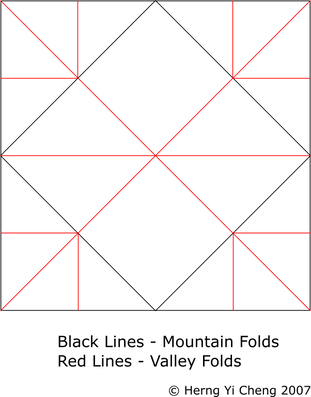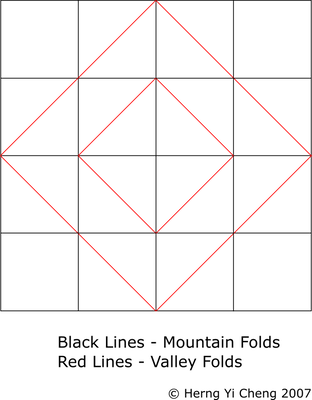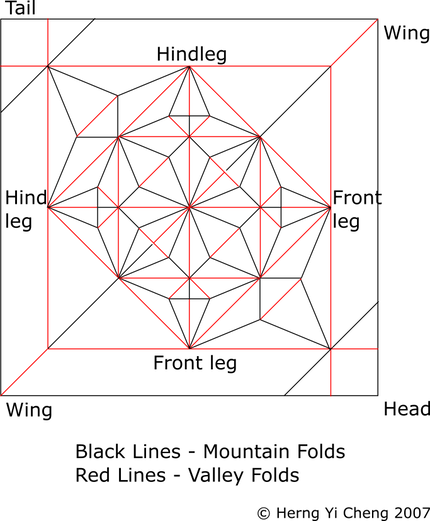|
This design was a result of experimentation with bases. One uncut square, designed in 2007. I had been trying to design a "Monster" so I tried to get many flaps. Experimentation yielded this derivative of the Waterbomb Base: On hindsight, this is essentially a Blintzed Bird Base. I folded my "monster" out of it, but it wasn't terribly satisfactory and it has joined the other forgotten designs. But I learned that more points could be produced through blintzing, which invloves folding the 4 corners of the square to the centre and using the new folded square to fold the base. The flaps that come from the blintzing can be pulled out, yielding a more complex base after some reshaping. I folded "monster version 2" which had claws and wings and teeth. I was happy with it but still only remember that it was similar to Jun Maekawa's Devil. Next, I attempted to design a dragon from this base, seeing that
An edge graft (of width 1/8) added detail to the head, with detail for the tail and extensions for the wings as bonuses. A lot of shaping is required - the legs need to be crimped, and the wings, head and tail can be heavily stylized. In particular, an open sink and five spread squashes on the tip of each leg can produce five claws. The shaping is so flexible that every dragon I folded is different. DiagramsHere are some rudimentary diagrams that I made for the dragon; they don't follow the above crease patterns completely, but are the same in essence.
The slideshow on top shows a rendition on display at Narita Airport's (成田空港) Nippon Origami Museum. I had stopped by there on transit to New York for the OrigamiUSA Convention 2011, carrying a dragon I had folded on the plane out of boredom. Seeing Robert Lang's and other international folders' models on display at the museum, I asked if anybody could just put a model for display. The shop owner said yes, and cleared a shelf for my dragon! A friend transiting at Narita Airport on May 20, 2013 confirmed that it was still there.
0 Comments
Leave a Reply. |
Archives
December 2020
Categories
All
|
||||||



 RSS Feed
RSS Feed